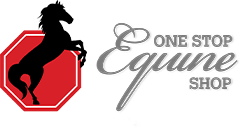There are several options to consider when selecting the right English saddle pad for you and your horse. Saddle pads are offered in different thicknesses, with different degrees of padding. They come in lighter materials, and in materials designed to improve your horses’ comfort. There are also different shapes and styles of saddle pads for sale - some appropriate for a particular discipline, and some appropriate for a specific type of saddle.
Choosing the Shape of Your Saddle Pad
Shaped Pads: Shaped pads have been popular in the hunter ring for years. They minimize the look of the saddle pad on the horse, allowing the beauty of the animal to be the focus, over a bright colored and/or glamorous pad. Some riders prefer the fluffy cushioning of a shaped pad to their larger pad. Choosing the correct shaped pad will have a lot to do with the shape and size of your saddle. Dressage saddles are more upright, the knee roll does not extend out as much, but instead drops down fairly straight from the seat. Jumping saddles and all purpose saddles also have slightly different contours. When choosing the shaped pad for you, look for a saddle pad that aligns with the type of saddle you have. The shaped saddle pad should extend evenly out around the edge of your saddle in all directions.
Dressage Pads: Dressage pads are larger, and typically quite square in shape. This accommodates the very upright build of the saddle. They are available in fairly traditional quilted types, like the Roma Line Quilt All-Purpose Pad.
Jumping Pads: Jumping pads are more elongated, giving more room for a knee roll that is more upfront, and a seat that typically extends back a little further. They come in different contours and designs, from the very basic, like the Thinline Ultra Untrimmed Half Pad to the more elaborate T3 Matrix Jumping Competition Pad.
Close Contact, Eventing and All Purpose Pads: Close contact saddle pads, built like the Woolback Close Contact Pad, are meant to be used with close contact saddles. Eventing pads are typically intended for use in cross country, since many event riders will use a dressage pad for the dressage phase, and a jumping pad for the stadium phase of 3-day eventing. Cross country saddles can be mono flaps and designed for the long gallops and jumping efforts of an extensive course. Pads such as the T3 Matrix Cross Country Competition Pad are intended for use in eventing. Saddle pads shaped for the type of saddle are available to provide a great fit for the saddle, billet, and girth straps. Know what type of saddle you are looking to match when choosing a saddle pad for it.
Choosing the Degree of Cushioning in Your Saddle Pad
There are almost as many choices in cushioning of your saddle, as there are choices in shape. Getting more cushioning can help your saddle fit, but it will make a tight saddle tighter, so it is not always better. First and most important, is to ensure you have had an assessment of your saddle on your horse done by a qualified saddle fitter, or at the very least, an experienced trainer. Cushioning can help a saddle fit for a horse that is lacking muscles, either from being young, or from being out of work. As the muscles develop, the cushioning of the saddle pad can change.
Choosing the Fabric Your Saddle Pad is Made From
Saddle pads come in a range of fabrics as well. Choosing a natural fiber against your horse, such as wool or sheepskin, as seen in a pad like the Wool Satin Event All Purpose Pad, can offer your horse all the benefits of thermoregulation and skin health that the lanolin in sheepskin brings. Perfect for sensitive horses, these pads are ideal in many ways, but more difficult to clean. New fabrics and technologies are developing saddle pads like the Horze Harleigh Saddle Pad. Designed for performance, comfort, cushioning and airflow, they can improve weight distribution and minimize any pressure points.
Choosing the Color and Style of an English Saddle Pad in Your Budget
Of course, when choosing a saddle pad for you and your horse, there is an element of personal taste and preference that comes into play, as well as an obvious aspect of budget. Choosing a great fitting saddle pad that serves your needs and makes you proud to show off your horse is always a wise choice! Considering ease of cleaning, especially if your horse tends to sweat a lot or get dirty, is important. Sensitive skin often does well with natural fibers of sheepskin or wool. Improving saddle fit with extra cushioning leaves you with multitudes of choice. Certainly, there are a range of price points with various options available.

